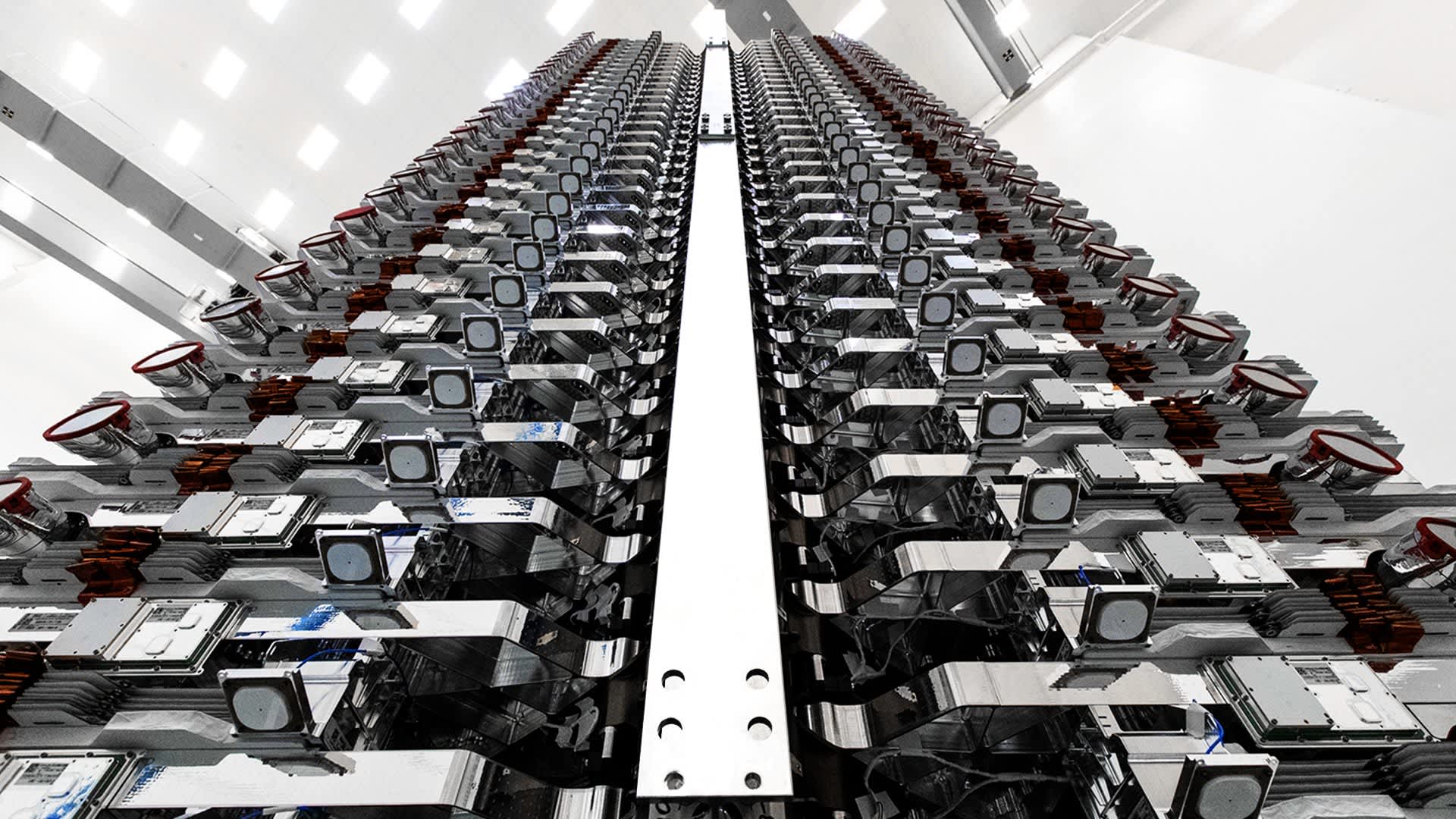
SpaceX is preparing to begin production of the next-generation of its Starlink internet satellites, according to a company job posting, with the company having deployed more than 1,000 first-generation satellites in orbit to date.
A posting on the company’s careers page, open at the time of publishing on Friday, says SpaceX is looking to hire a lead software engineer for Starlink hardware testing, specifically to “define and lead [the] test software roadmap for Starlink v1.5 and v2.0 production.”
The company did not respond to CNBC’s request for comment on the job posting.
Starlink is SpaceX’s ambitious project to build an interconnected internet network with thousands of satellites, known in the space industry as a constellation, designed to deliver high-speed internet to consumers anywhere on the planet. The Federal Communications Commission in November 2018 approved SpaceX to launch 11,943 satellites, with the company aiming to deploy 4,425 satellites in orbit by 2024.
Elon Musk’s venture has so far has been building v0.9 and v1.0 Starlink satellites, with 1,023 satellites deployed over the course of 18 launches as of its most recent mission on Sunday.
The company launches as many as 60 Starlink satellites at a time with its Falcon 9 rockets, but it has also included the satellites as “rideshares” on missions for other customers. SpaceX said in August that it is “building 120 satellites per month,” and company officials told the FCC last week that it continues to ramp up its launch rate to match that production.
It’s unclear how the new generation of v1.5 and v2.0 satellites differ from those launched to date.
SpaceX began adding “sun visors” to its Starlink satellites in June, as the company sought to address a public outcry from astronomers that the numerous spacecraft were appearing as bright streaks across images taken by telescopes.
SpaceX has also begun testing a technology known as intersatellite links, or “space lasers” as Musk has referred to them, which would allow the satellites to create data connections to each other — rather than individually connect to points on the ground.
Intersatellite links would help improve the Starlink system by reducing the number of ground-based stations needed to operate globally, as well as decrease the network’s latency and increase its speed. Notably, SpaceX’s most recent mission, the first to launch Starlink satellites into orbit above the Earth’s poles, included intersatellite links.
Musk in a tweet said that all of SpaceX’s Starlink satellites launched in 2022 “will have laser links.”
“Only our polar sats have laser this year,” Musk added.
SpaceX began a public beta program of Starlink in October, with service priced at $ 99 a month, in addition to a $ 499 upfront cost to order the Starlink Kit, which includes a user terminal and Wi-Fi router to connect to the satellites. The company is offering the service to select customers in the northern U.S., Canada, and the U.K.
While SpaceX’s initial service is hitting download speeds of 100 Mbps, the company said in a presentation to the FCC this month that it plans to increase Starlink’s download speeds to 10 Gbps in the future.
Subscribe to CNBC PRO for exclusive insights and analysis, and live business day programming from around the world.






